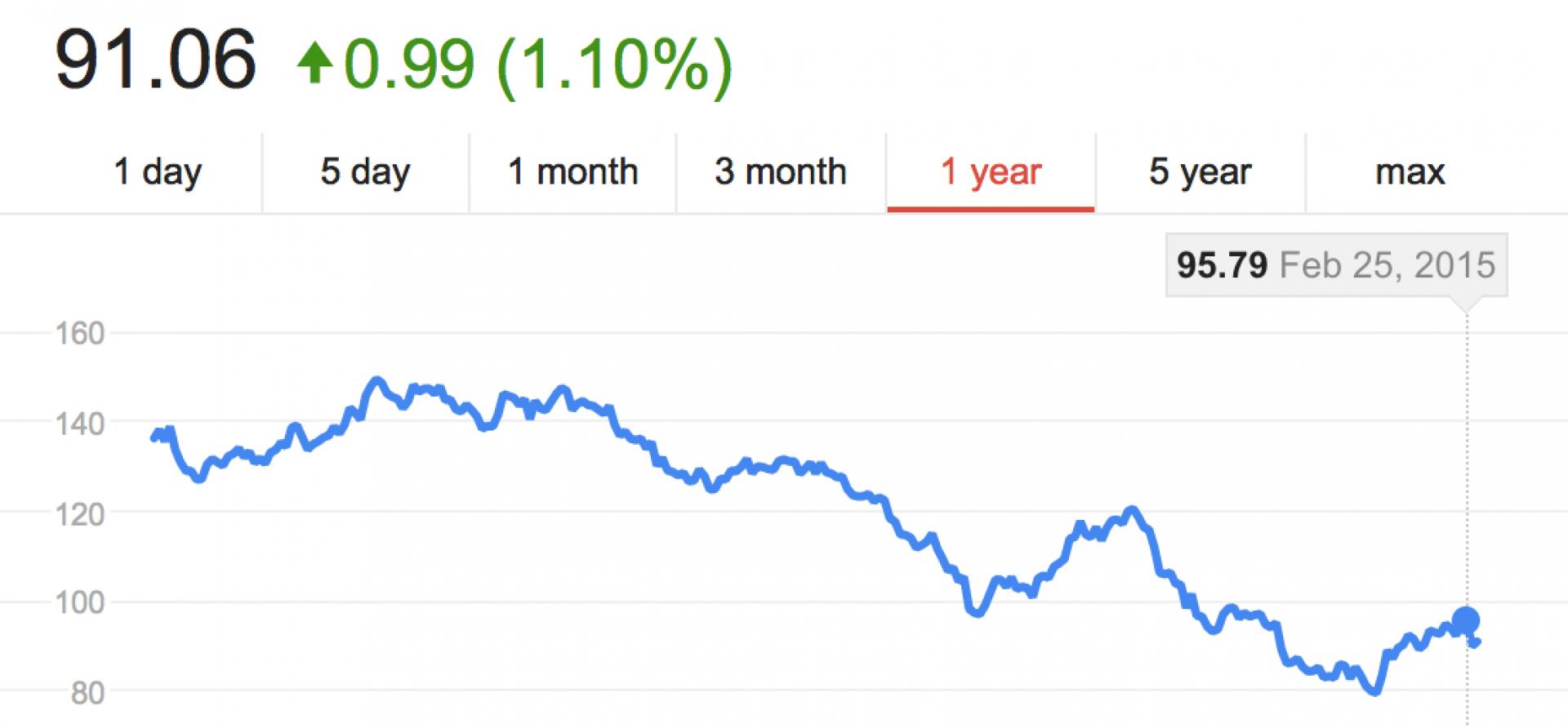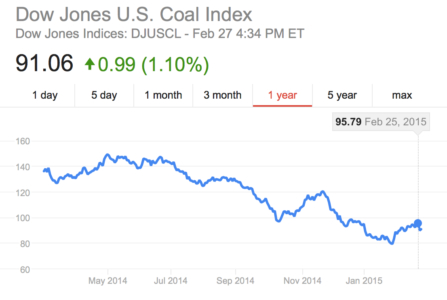U.S. Coal-Industry Redux 2015: It’s Not Getting Any Easier for Alpha, Arch, Cloud Peak, or Peabody

 Nothing whatsoever has changed in the troubling tea leaves for the U.S. coal industry lately, and our forecast into 2016 remains gloomy and getting gloomier.
Nothing whatsoever has changed in the troubling tea leaves for the U.S. coal industry lately, and our forecast into 2016 remains gloomy and getting gloomier.
Here are the broad strokes for each of the four largest producers, ranked by size:
Peabody Energy’s numbers for 2014 show that the U.S. coal industry has decoupled from the broader, gradually recovering economy and that the company’s spiral has deepened. Company executives themselves forecast no recovery on the horizon, seeing further losses this year.
Peabody epitomizes the industry’s fundamental structural problem. It is being challenged by dramatic increases in the supply of natural gas, market incursion from renewable sources and the commensurate decrease in power prices.
The company acknowledges that total domestic coal demand could fall by more than 5 to 6 percent in 2015, but it also very optimistically forecasts a rise in natural gas prices into 2017 as a potential catalyst in reversing the eight-year trend in declining U.S. domestic coal demand. All growth capital expenditure has been suspended, and Peabody sees its stay-in-business capex running at less than 30 percent of depreciation, an unsustainable position over the medium term that will see the company continue to shrink.
Arch Coal is in trouble. It has posted significant losses for three years running and its performance in 2015 will most likely remain in the red.
Arch executives say they expect coal markets this year to perform about the same as they did last year, which was a brutal 12 months for U.S. coal producers. This admission—that 2015 will bring no upturn—suggests that whatever initiatives Arch pursues this year will be geared solely toward reducing losses. The company is in hunker-down-and-survive mode.
Arch CEO John W. Eaves has conceded dormancy in near-term opportunities, expressing a sunny belief instead in future markets. This optimism was expressed on the very same day that Wood Mackenzie, a key industry consultant and previously one of the most bullish firms on coal exports, signaled its downgrade of international coal markets. WoodMac joins Bernstein Research, Goldman Sachs, Morgan Stanley, UBS, Citigroup and a host of others who have lost faith.
Alpha Natural Resources will find it all but impossible this year to even begin to reverse a slide in which a fifth year of losses is likely.
Alpha is responding to this likelihood by reducing capital expenditures, and it may also close more mines, continuing a trend established over the past few years. It might even be in the market to sell some of those mines.
The company has $3.9 billion in long-term debt and faces looming payoffs over the next several years. Its long-term debt actually increased by $320 million in 2013—this at a company with a market capitalization this Friday of $281 million.
Alone among the Powder River Basin’s largest coal producers, Cloud Peak Energy posted a gain in 2014.
It did so to the tune of $79 million—and despite revenue, production and export losses—by reducing its mining costs and selling an asset (getting a $74.3 million infusion for its 50 percent stake in the Decker mine in southeast Wyoming).
Cloud Peak, which specializes in Powder River Basin production, is in better financial shape than its competitors. It boasts relatively low long-term debt, and actually cut its debt load by $100 million in 2014, although there was some deterioration in its cash position.
Two core Cloud Peak numbers reflected broader industry trends, however. The company’s domestic operation sold less coal—85.9 million tons, down from a high of 93 million tons in 2012—and at lower prices than in 2013. It also sold less coal overseas, with revenues from South Korea, its largest export customer, falling to $153 million in 2014 from $265 million in 2012. A drop in the price of Newcastle coal from its height at over $100 per ton to its current levels in the mid-$60-per-ton range has made export sales less lucrative and stopped any spot selling the company benefited from in the past.
Investors who held coal stocks in 2014 lost money.
Tom Sanzillo is IEEFA’s director of finance.











